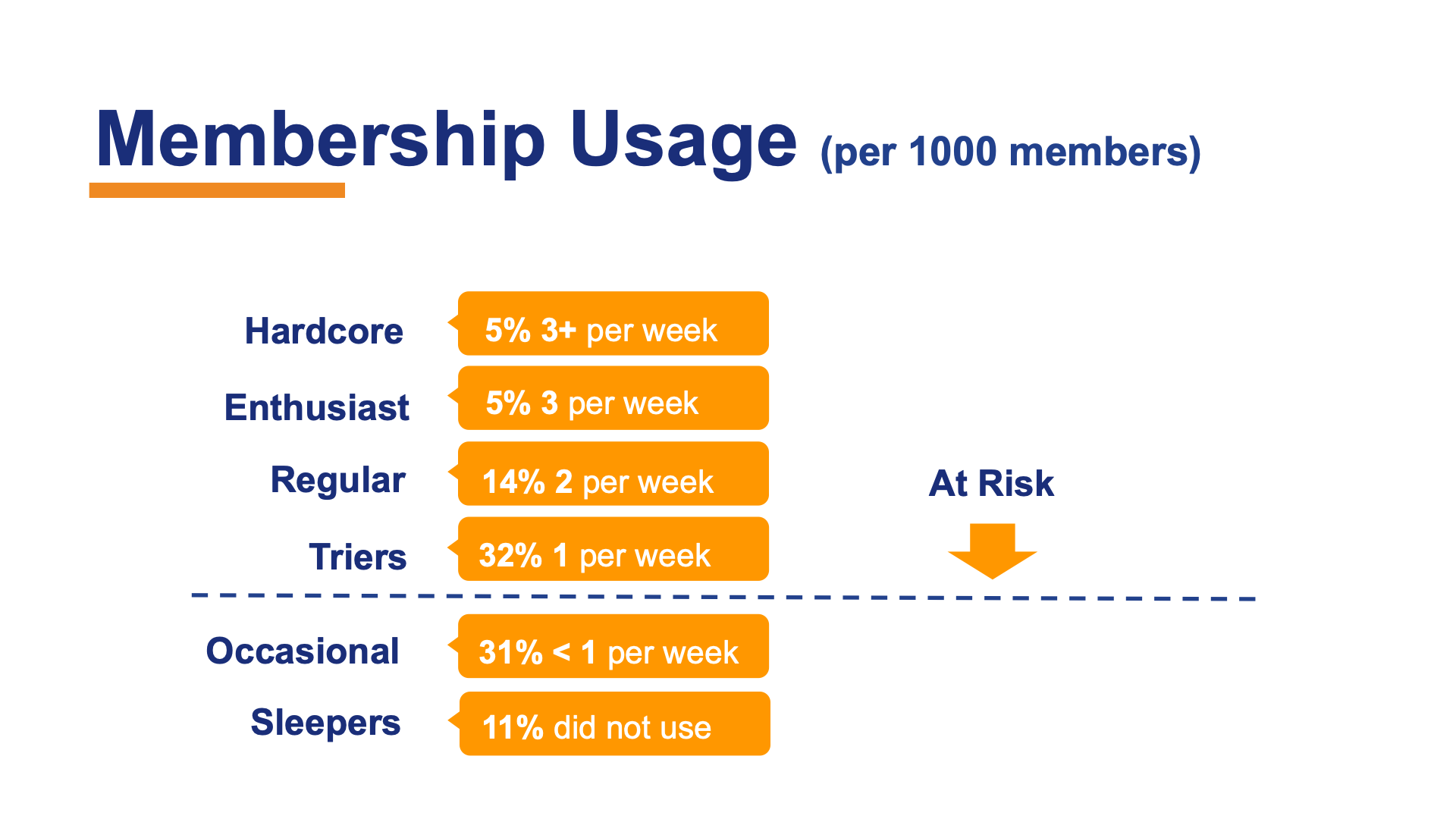Association of British Climbing Walls (ABC) Retention Presentation
I was delighted to be asked to speak at the Association of British Climbing Walls event at the Magna Science Park in Sheffield. In this keynote presentation I describe what we have learnt in the fitness industry that may help improve retention for climbing wall businesses.
Move Congress - Top 10 Retention factors (short)
I was asked to represent the fitness industry at the physical activity and community sport conference in Budapest in Hungary. I thought I had 90 minutes until I got there when I was told you have 15 minutes. So this is the result.
Below is a transcript of the Move Congress 2019
Introduction
I'm Dr. Paul Bedford. I have a PhD in behavioural psychology, applied to fitness environments. I started in the fitness industry having spent 12 years as a plumber. So by trade I'm a plumber. And then I got into fitness because I was into exercise and I worked in my local YMCA, which is a charitable organization in the UK as a volunteer instructor. They then gave me a job. I moved up through that organization till I was running their facilities and then I've moved on to work in both public and private sector. But there was, I've always been a drive for me to understand why people start, but don't keep going with exercise. So after a number of years, I did a master's degree at City University in ...
"What can I do for you?"

This article first appeared in Fitness MANAGEMENT international (Germany)
In this article, we want to explain the factors that have a lasting influence on member retention for fitness studios, as well as provide food for thought and possible solutions for your studio practice.
In the first part of the article in fMi 1/2021 we illustrated the two basic factors for effective retention of your members in your studio: the regular visits of your members to the studio as well as the finely "dosed" interaction with members and prospects.
3. Programming
As the third most important aspect of member retention, we have identified "programming" in the team. This refers to the training offered in the studio in general as well as its individual design in the form of training plans. What training options does the club offer its members and how does it communicate them to its members and interested parties. In order to be able to better understand the mechanisms in this area, we divide the exerci...
Design Memorable Exercise Experiences That Last - The Fitness Business Podcast Blog

The blog was originally written for the Fitness Business Podcast. If you would like to read it in its original location click on the link at the bottom of this page.
While most people today know me more for work on retention, attrition and member loyalty, the first half of my career was as a fitness instructor, a personal trainer and a trainer of trainers. Much of this time was focused on anatomy, physiology, kinesiology and exercise program design. I thought I was pretty good at exercise program design but I could never understand why customers and clients wouldn’t stick to these programs that I had crafted for them, and that’s why I began to study psychology.
Two masters degrees, numerous short courses, workshops and a PhD later I am still just a focused on improving exercise adherence and retention.
Much of what I have been reading in the past two years has been in the area of experience design. My rational is if members have a better experience they stay members and we see im...
Recovering Quickly
In this post I want to focus on how quickly we are actually recovering and what can we do to accelerate that process.
I want to talk about you looking at your own data. I want you to trust in your own data.
There's an awful lot of data and numbers being produced by trade organizations, by operators and also financial institutions and I think you need to be mindful that comparing yourself to some of that is not going to be useful. Just focusing on what what's going on within your business is probably the most important thing you can do right now, rather than trying to compare you to someone else.
Typical club groupings of members, pre pandemic, let's say this is a thousand members. You have your hardcore exercises, your enthusiasts, regulars, irregulars and your sleepers.

Once the pandemic hit, we saw was there was an overnight contraction of the business.
Within that, we came up with our descriptions, we talk about hard core exercises by visit frequency.
Then you have the enthu...
Self-service can still be Member Service

I’ve said it in meetings, at conferences and in webinars that the member experience and member service is one of those parts of your business that you just can’t afford to get wrong. The recent pandemic has seen many businesses relocate staff from brick and mortar to work from home environments. Often without sufficient training or the technology to support such interactions. I have changed my business banking and telecoms supplier during this time simply because my existing providers were not able to meet my self-service needs. Yes I do want to be able to do some things using self service tools, particularly if they are routine behaviours.
With so many more interactions and transactions taking place online, members are really getting an insight into those businesses that have evolved and those that are still lagging behind.
Think about how uncomfortable you feel when you hear someone speak negatively about their experience with your business and how often is it because their experie...
8 Essential Planning Steps to Kickstart your Retention
Your business is constantly experiencing change. Whether caused by the global pandemic, fitness trends, new technology implementations, procedural updates, department reorganisation, or customer/member service improvements, change is constant and necessary for growth and profitability.
Developing a consistent approach to the measurement and management of your retention processes will aid in maximising the impact it has on your customer/member s and staff.
One of the most common challenges operators describe to us about tackling retention, is there are so many things they could do, but they don’t know where to start. What should take priority, what will have the biggest impact and what will be the easiest to deliver.
In this blog I will talk about the planning and communications required to develop a successful retention plan.
1. Begin with the End in Mind
Yeah one of Stephen Coveys seven habits, but it’s a concept that has been around since the beginning of time. Since most chan...
Club Industry 2020 - Retention In a Time of COVID
This is the 20 minute session I pre recorded for Club Industry 2020
Ask Me Anything - 5 Questions I got asked by Lindsey Leemis from Twist Intergrations
Q1. If you were to pick just three KPIs for clubs to focus on around member retention, what would they be and how often would you be tracking their progress daily, weekly, monthly, etc.
The first thing I would look at measuring is the retention time and I'd be doing this perhaps every four months, maybe twice a year. Certainly at the beginning of a project, we will always use survival analysis to measure the gap between when people join and when they leave and when people join and when they stopped paying. So we use survival analysis to do that.
That gives us a curve that allows us to see where to intervene in order to improve customer retention. If the curve looks like one of those Olympic ski slopes that the ski jumpers use and there is a cliff almost straight away, that tells us there is a different problem than if there is a fairly flat line for the first three to four months, and then it starts to drop away. So the first thing we would measure would be the time that someone actu...
Member retention success: Understanding surveys and feedback loops
How can you use surveys and customer feedback to attract new members to your club and, more importantly, make sure they stay? In this blog I’m going to share with you some invaluable tools that you can use to gain important information about your customers. I’m also going to tell you what you can do with that data in order to create member retention success.
A robust methodology
If you want feedback from your customers, always think about why you're actually asking them questions. What is it you're trying to understand by getting feedback from your members? Who are you wanting to hear from and who is actually responding when you send out a survey? For feedback to make a difference to your business, you need a robust methodology.
Think about the timeline of them being a customer before you survey them. Are you going to ask them for feedback on day five, day ten, day 90? Or maybe your goal is to get to know what’s going on with your customers at different points throughout the calen...


